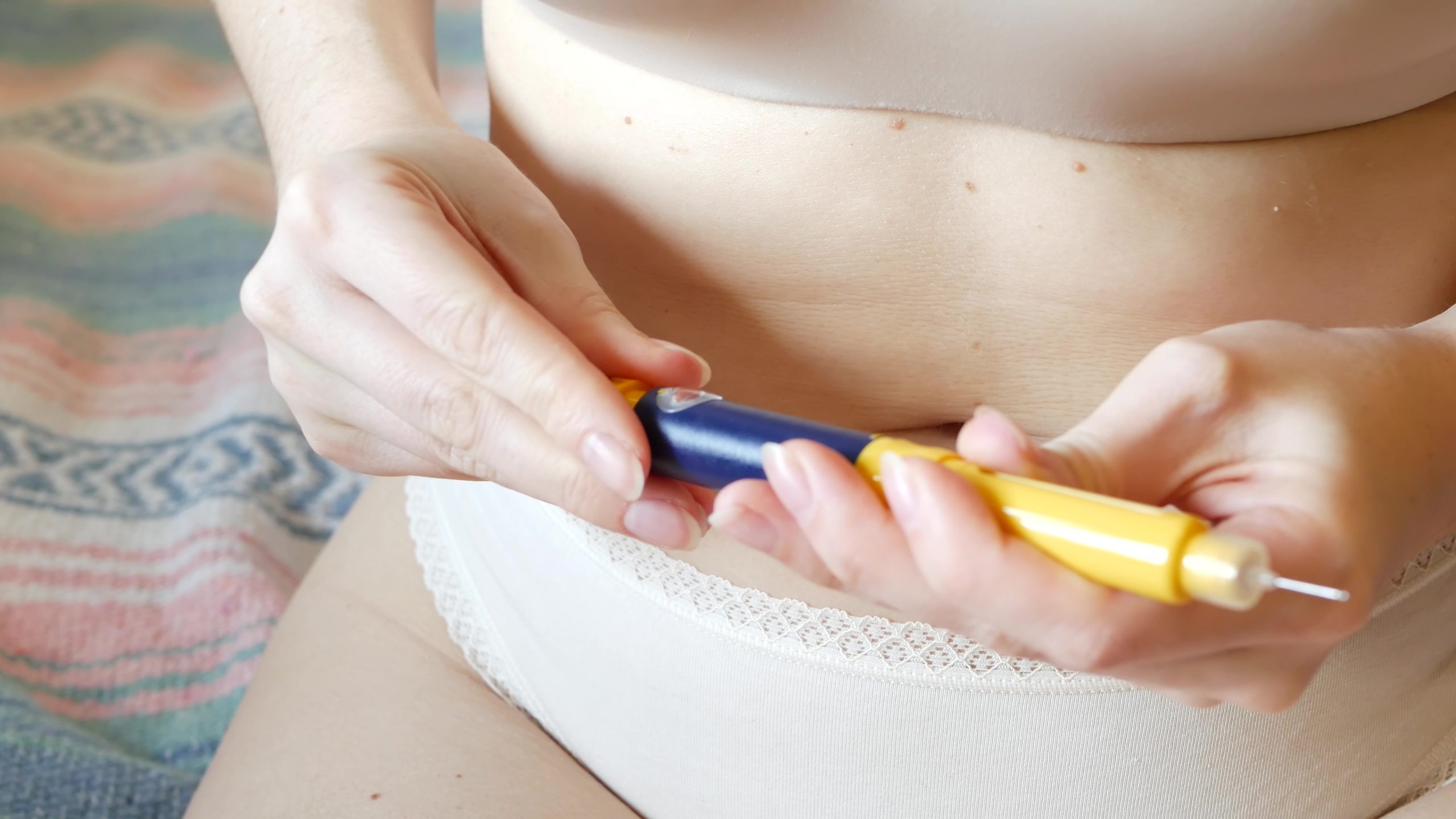IVF Trigger Shot: What it is and How it Works

In vitro fertilization (IVF) is a journey that involves several critical steps, one of which is the administration of the IVF trigger shot.
This injection is carefully timed in relation to other medications and procedures to “trigger ovulation” and induce the final maturation of the eggs. Understanding its purpose, timing, side effects, and how to administer it correctly can significantly impact the success of your IVF cycle.
What Is an IVF Trigger Shot?
The trigger shot is a hormone injection designed to stimulate the final maturation of your eggs in preparation for egg retrieval.
Depending on your specific IVF stimulation protocol, this shot will typically contain either human chorionic gonadotropin (hCG), leuprolide acetate (Lupron), or a combination of both.
A 2020 study found that the dual trigger approach improves IVF outcomes for older patients with low ovarian reserve.
Administered subcutaneously or intramuscularly, the shot is timed precisely to optimize the success of the egg retrieval procedure.
Types of Trigger Shots: Lupron, hCG, or Combination
Lupron and hCG each have their unique mechanisms, benefits, and considerations. Let’s look at these differences.
Lupron (GnRH Agonist)
- Mechanism: Lupron works by stimulating a natural surge of luteinizing hormone (LH), similar to the body’s natural ovulation process.
- Usage: Often recommended for women at higher risk of ovarian hyperstimulation syndrome (OHSS) because it virtually eliminates the risk compared to hCG.
- Administration: Typically administered subcutaneously.
- Effectiveness: Effective in inducing ovulation, but may be less effective in triggering final maturation in certain cases, potentially requiring supplemental hCG.
hCG (Human Chorionic Gonadotropin)
- Mechanism: Mimics the natural LH surge directly, promoting the final maturation and release of eggs.
- Usage: The most commonly triggering hormone used in IVF protocols.
- Administration: Can be given either intramuscularly or subcutaneously.
- Effectiveness: Very effective in triggering ovulation and ensuring that a woman’s eggs are ready for retrieval. However, it carries a higher risk of OHSS compared to Lupron.
Key Differences
- Lupron has a much lower risk of causing OHSS, making it preferable for women who are prone to this condition, including women with PCOS, younger women, women with high AMH or AFCs, African American women, and patients who produced a high number of eggs in a recent cycle.
- hCG is generally more reliable for ensuring final egg maturation, although it may increase the risk of OHSS.
- Lupron may be combined with a low dose of hCG to balance the risk of OHSS and ensure effective egg maturation.
Choosing Between Lupron and hCG
Choosing between Lupron and hCG depends on individual factors, including your risk of OHSS, your response to previous treatments, and your specific medical circumstances. Your fertility specialist will recommend the most appropriate option based on your unique needs.
When should I take the trigger shot?
Taking your trigger shot at the proper time is critical for IVF success. Generally, the trigger shot is administered after 8-14 days of ovarian stimulation with FSH or when the majority of follicles have reached around 18-20 mm in diameter.
Your fertility specialist will monitor your follicle development through ultrasound and blood tests to determine the optimal timing.
The trigger shot is usually given 34-36 hours before the scheduled egg retrieval procedure. This will ensure that your eggs are mature and ready for retrieval.
Your doctor will give you specific instructions regarding the timing of your trigger shot. It’s critical that you follow these exactly.
Do I Administer My Own Trigger Shot?
Generally, most women administer their own trigger shots during the IVF process.
Your fertility specialist or nurse will provide detailed instructions on how to prepare and administer the injection.
Subcutaneous injections are typically given in the abdomen or thigh, while intramuscular injections are usually administered in the upper outer quadrant of the buttocks. Most trigger shots are given subcutaneously.
If you’re uncomfortable with injecting yourself, you can ask your partner, a friend, or a family member to help.
IVF Trigger Shot Side Effects
Though most women don’t experience side effects from trigger shots, there is the potential for some side effects.
The most common side effects include
- Irritation, itching, and redness at the site of injection–usually lasting a few hours to a day.
- An increase in symptoms associated with ovarian stimulation, such as mild abdominal discomfort, bloating, and stomach or pelvic pain.
Beyond these mild risks is the more potentially serious side effect known as ovarian hyperstimulation (OHSS).
When OHSS occurs the ovaries swell and fill with fluid. In mild cases, symptoms include abdominal discomfort, bloating, and gastrointestinal issues such as nausea, vomiting, or diarrhea.
Though rare, severe OHSS can be a medical emergency. Symptoms of severe OHSS include rapid weight gain (over 2 pounds per day), significant abdominal bloating, and extreme abdominal pain or severe nausea and vomiting. If you experience these symptoms, it is important to seek immediate medical attention.
Fortunately, serious hyperstimulation can be largely avoided with careful monitoring, proper dosing, and the right choice of trigger medications. Adopting an antagonist protocol instead of an agonist protocol can reduce the risk of hyperstimulation from 12% to 2.7%. Additionally, using a Lupron/GnRH trigger instead of an hCG trigger almost entirely eliminates this risk.

IVF Trigger Shot: The Takeaway
In vitro fertilization (IVF) includes several key steps, with the trigger shot being crucial for egg maturation and preventing ovulation. Correct timing and understanding of the trigger shot’s role can greatly influence the success of your IVF cycle.
Knowing the differences between Lupron and hCG trigger shots is important. Each has distinct benefits and considerations, and your fertility specialist will direct you to the best option based on your needs.
Administering the trigger shot properly, whether on your own or with help, and being aware of potential side effects like ovarian hyperstimulation syndrome (OHSS) is vital. Careful monitoring with the right medication choice while closely following your fertility care team’s instructions can minimize risks and contribute to a successful IVF experience.


